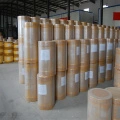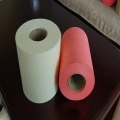Fuel filter paper is the core filtration medium used in modern paper fuel filters and fuel filter paper elements, offering critical protection against impurities, particulates, resin, and water in petrochemical and metallurgical systems. This comprehensive guide explores manufacturing techniques, industry standards, technical trends, parameter tables, real-world cases, and strategic vendor comparisons—backed by data and visualized analytics.
Industry Trends and Market Overview
The fuel filter paper market is projected to grow at a CAGR of 5.2% from 2023 to 2029,[1] owing to the surging adoption in automotive, petrochemical, hydraulic, and metallurgical industries. The increasing demand for cleaner fuel, tighter emission controls, and advanced engine protection are key market drivers.
According to IHS Markit, over 2.9 billion fuel filters using paper media were consumed in the auto industry in 2022, with 73% of these filters using advanced cellulose or synthetic composite filter papers.
What is Fuel Filter Paper?
Fuel filter paper is a specialty porous medium engineered from high-purity cellulose fiber, synthetic fiber, or their composites, exhibiting high porosity, specific fiber density, and multi-layered structures. Its primary functions include particle entrapment, water separation, chemical corrosion resistance, and long-term endurance across various refinery and engine fuel systems.
- Synonym: Fuel filter paper element, filter media for paper fuel filters
- Typical applications: Automotive, petrochemical, off-road machinery, aviation, hydraulics
- Key attributes: Efficiency (99.5% at 5–10μm), bursting strength, chemical stability, pleatability
1. Manufacturing Process Flow of Fuel Filter Paper
Pulp Selection
High-purity cellulose/synthetic blend
→
Refining & Blending
Fiber dispersion, resin addition
→
Sheet Formation
Wet-laid web, forming mesh
→
Impregnation & Coating
Phenolic, epoxy, or melamine resin
→
Curing & Drying
Heated tunnels, roll press
→
Slitting & Cutting
Computerized CNC sizing
→
Quality Inspection
ISO/ANSI/SAE test as per order
ISO 4548-12/SAE J905 are widely adopted for quality testing—verifying burst, particle retention, thickness, grammage, and flow.
Material Technology:
Leading fuel filter paper manufacturers employ advanced double-layer composite structures, CNC slitting, and high-speed curing technology to enhance pore size uniformity, minimize fiber shedding, and maximize filter life.
Typical resin binder content: 10–25% depending on chemical compatibility, rigidity, and region.
Key Quality & Industry Certifications
- ISO 9001:2015
- ISO/TS 16949 (Automotive)
- SAE J905/J1985/J2360
- FDA (Food contact, select grades)
- ROHS/REACH compliance
2. Fuel Filter Paper Technical Specifications & Data Table
Typical Fuel Filter Paper - Parameter Reference Table
| Parameter |
Standard Value |
Test Method |
Industry Range |
Significance |
| Nominal Thickness |
0.32–0.5 mm |
ISO 4593 |
0.25–0.7 mm |
Flow resistance & capacity |
| Basis Weight (GSM) |
125–160 g/m² |
ISO 536 |
100–220 g/m² |
Strength, pleatability |
| Pore Size (μm) |
5–20 μm |
Mercury Porosimetry |
3–30 μm |
Particle retention efficiency |
| Max Burst Pressure |
≥ 380 kPa |
SAE J905 |
300–500 kPa |
Structural reliability |
| Chemical Resistance |
Excellent: gasoline, diesel, ethanol blends |
ISO 29463 |
Good–Excellent |
Long-term stability |
| Filtration Efficiency |
≥ 99.5% @10μm |
ISO 4548-12 |
98%–99.9% |
Fuel system protection |
| Water Repellency |
>85° (contact angle) |
ASTM D724 |
70°–90° |
Phase separation |
| Working Temperature |
-40°C~135°C |
ISO 815 |
-30°C~150°C |
Engine compatibility |
| Service Life |
>12000h (auto) / 6000h (industry) |
Field Test |
3000–15000h |
Longevity |
* All values above correspond to leading international fuel filter paper manufacturers and 2023 market-dominant products. Actual specs can be customized for critical duties.
Performance Benchmarks (Third-Party Lab, 2023)
| Brand | ISO Efficiency 10μm | Burst Pressure (kPa) | Typical Lifetime (hr) |
| FiltersMaterial | 99.5% | 390 | 12000 |
| Ahlstrom | 99.7% | 430 | 13500 |
| Hollingsworth | 99.3% | 385 | 11500 |
| Tokuoka (Japan) | 99.4% | 400 | 11000 |
3. Advanced Applications of Fuel Filter Paper
Industry Sectors:
- Automotive: OEM fuel systems, diesel/gasoline filter elements, emission reduction
- Metallurgy: Hydraulic oil purification, continuous casting line protection
- Petrochemical: Refinery pre-filtration units, bulk fuel storage/tank/pipeline
- Water Treatment: Oil-water separation, coalescence filters
- Power Generation: Turbine fuel/oil protection
Benefits:
- Precise particle retention (down to 5μm)
- Chemical/thermal aging resistance, non-leaching
- Energy savings: Reduced differential pressure by 7–15% (vs. legacy glass-fiber media)
Application Cases (2021–2024)
Case 1: OEM Automotive Fuel Module, EU Market
- Client: PSA Peugeot Citroën Group
- Type: Synthetic-cellulose layered fuel filter paper element
- Results: 17% service interval extension (60k→70k km); guaranteed Euro6 particle specs
Case 2: Petrochemical Storage Facility, Middle East
- Installed: 95,000 L/h pre-filtration units | Dual-layer paper fuel filters
- Efficiency: >99.7% @ 10μm, Service life: 10,800 hr
- Impact: 21% reduction in injector fouling, regulatory compliance improved
Case 3: Steel Mill Central Hydraulic Line, Turkey
- Specification: ISO/TS16949 certified fuel filter paper
- Delta-P reduction: -8% | Filtration cost: -12% (annual)
- Feedback: "Consistent performance under severe temps; filter paper integrity outstanding." – Maintenance Chief
4. Vendor Comparison & Customization Strategies
Choosing the right fuel filter paper manufacturer is crucial for OEM, aftermarket, and industrial users. Consider the following criteria:
- Certification & Source: ISO/TS16949, origin–Europe/China/Japan
- Resin System: Phenolic (fuel exposure), Epoxy (rigidity), Melamine (hydrophobicity)
- Fiber Source & Blending: Japanese long-fiber cellulose vs. European high-dispersion blends vs. full synthetic
- Slitting Precision: CNC tolerance ≤0.1mm
- Supply Stability: Lead time, MOQ, multi-lot traceability
FiltersMaterial.com
- Multiple certification (ISO, TS16949, FDA grades)
- Annual production: >20,000 tons (2023)
- Global supply to 100+ OEMs
- On-demand formulation: Pore 3–30μm, custom resin, cut width/shapes
- Lead time: 8~16 days (standard), urgent: 5 days
- Full technical support: Lab reports, reference projects
Click to Request Custom Fuel Filter Paper Specifications →
Classic Product Series
| Series | Structure | Pore Size (μm) | Main Use |
| Standard Cellulose | Single-layer, resin-impregnated | 8–30 | Entry-level auto, off-road |
| Composite Layered | Cellulose + Polypropylene | 5–12 | Emission-compliant engines |
| Full Synthetic | 100% Polyamide/Epoxy | 3–7 | High-temp, biofuel resistant |
| Hydrophobic | Cellulose/Synthetic, fluorinated | 10–22 | Water separation filters |
5. FAQ – Fuel Filter Paper Technology & Use
Q1: What is the main material used in fuel filter paper?
Fuel filter paper typically uses high-purity cellulose fibers, optionally blended with synthetic fibers (e.g., polypropylene, polyamide) for higher strength and chemical resistance. Cellulose offers optimal wet strength, pleating ease, and cost, while synthetics improve lifetime and efficiency.
Q2: What are typical specifications for an automotive grade paper fuel filter?
Paper fuel filters for cars use filter media 0.32–0.45mm thick, GSM 110–180, nominal pore 5–20μm, and resin loading 15–30%, meeting ISO 4548-12 and SAE J905 requirements.
Q3: What installation or integration standards apply to fuel filter paper elements?
Major standards: ISO 4548-12 (Filter Performance); ISO/TS 16949 (Automotive); SAE J1985/J2360 (US/EU); dimensions as per OEM modules. Filter paper must match pleat depth, rigidity, and set dimensions for leak-free sealing.
Q4: How do you test the filtration efficiency of fuel filter paper?
Efficiency is tested per ISO 4548-12 using calibrated particle injection; the ratio of upstream/downstream counts at 5, 10, 15, and 20μm gives efficiency percentage. 99.5% @ 10μm is considered high-performance.
Q5: Can the fuel filter paper be customized for biodiesel or ethanol blends?
Yes. Synthetic blends and special epoxy/melamine resins offer superior compatibility for aggressive fuels. Custom hydrophobic coatings (e.g., PTFE, fluorinated agents) are recommended for water separation filters.
Q6: What is the typical service life and maintenance interval?
Automotive fuel filter paper elements last 12,000–15,000 hours or 30,000–70,000 km (depending on fuel quality). Industrial paper fuel filters generally require change after 6000–10,000 hours operation.
Q7: What support and warranty do fuel filter paper manufacturers provide?
Leading manufacturers supply full lot traceability, ISO/TS test reports, customized spec sheets, and technical consultation. Typical warranty is 1–2 years.
Contact FiltersMaterial support for dedicated OEM/ODM programs.
6. Ordering, Delivery, and Customer Support
Order Volumes & Lead Time:
- MOQ: 500 sq.m (custom cut), 5 rolls/lot (std. size)
- Delivery: 8–16 days (standard); 5 days (expedited, surcharge may apply)
Warranty & After-Sales:
- 12–24 months standard warranty
- Root-cause analysis on failures, performance optimization advice
- Continuous technical FAQ support via email/WhatsApp/WeChat
- 3-day sample dispatch for OEM projects
Contact:
Email: sales@filtersmaterial.com
7. References & Further Reading
-
[1] "Global Automotive Fuel Filters Market Report 2023-2029", MarketsandMarkets, Read full report
-
E. Lyckman et al., "Advanced filter paper solutions for automotive applications", Filtration+Separation, 2023, View article
-
"Technical comparison of cellulose and synthetic filter papers", SAE Paper 2019-01-0753, Details
-
International Filtration Forum – "Latest Trends in Filter Media", Read forum highlight
-
"Filtration efficiency evolution: Fuel filter paper technology (2013–2023)", Filter Media Journal, Vol. 45
This article synthesizes technical insights and referenced industry sources for fuel filter paper, with a focus on expertise-informed guidance and practical applications. For more in-depth technical articles and peer feedback, see international filtration forums and industry journals linked above.






